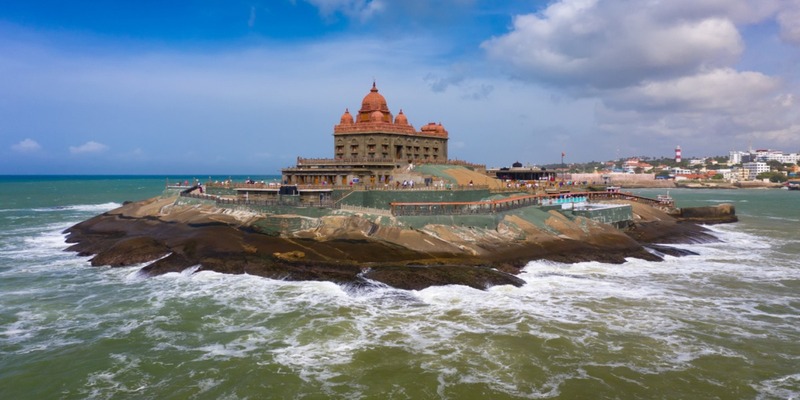
Unraveling Asynchronous Messaging
Jan 31, 2024 By Lucy Lee
Messaging is crucial to modern digital communication. The key question is: is messaging always asynchronous? Many messaging services encourage asynchronous communication, where users have discussions without contemporaneous involvement, although these tools are developing. Real-time chat and video calls challenge rigorous asynchrony. This dynamic interaction between asynchronous and synchronous modes prompts a comparison. Asynchronous communication allows users to answer at their own leisure, making it more convenient.

Is messaging always asynchronous?
Messaging systems favor asynchronous communication, where individuals talk without simultaneous interaction. This asynchronous nature suits internet consumers' flexibility and comfort. Be aware that messaging isn't asynchronous. In many messaging apps, real-time chat and video calls include synchronous components. These characteristics enable quick contact by challenging delayed replies. This blurring of asynchronous and synchronous features shows how messaging systems may adapt to varied communication preferences and digital dynamics.
Asynchronous communication allows people to answer at their leisure, yet synchronous features recognize the value of real-time contact in specific situations. The changing landscape of messaging systems combines multiple communication types, giving consumers alternatives beyond rigid asynchrony.
Asynchronous vs. Synchronous Communication: Which One Is Better?
Asynchronous communication is flexible because users may react when they choose. This flexibility helps govern communication dynamics, especially in non-urgent settings. Asynchronous jobs and collaborative initiatives that don't demand rapid connection suit it.
Synchronous communication allows real-time cooperation and problem-solving. Synchronous communication is useful in team talks, urgent problem-solving, and dynamic collaborative initiatives. Which strategy is best depends on the communication environment and goals. A communication strategy must balance asynchronous and synchronous aspects to meet users' varying demands in different contexts. Recognizing each mode's strengths and weaknesses helps people and companies manage the complex dynamics of digital communication.
Advantages Of Asynchronous Messaging:
Improved Customer Satisfaction:
The benefits of asynchronous messaging include increased customer satisfaction.
Asynchronous communication's flexibility boosts client satisfaction. By reducing the demand for fast answers, users may respond to communications at their speed, meeting varied schedules and preferences.
This flexibility empowers users to organize interactions according to their regular patterns, improving their experience. Asynchronous communication reduces time-sensitive irritation, giving consumers a feeling of control and satisfaction. Increased response time autonomy improves user satisfaction by recognizing varied time limitations and priorities.
Streamlined Customer Experience:
Flexibility-focused asynchronous communication streamlines the client experience. No real-time availability is needed since users may interact with messages at leisure. This decreases stress from rapid replies and boosts user satisfaction. Users get a smoother experience when they can control communication themselves. It lets users browse messages at their speed, making interactions more customized. This versatility improves the communication platform's image and streamlines the consumer experience.

Increased Agent Productivity:
Asynchronous communication boosts agent efficiency as well as user benefits. Agents may handle many conversations without real-time limitations. This flexibility helps them prioritize questions and concerns. Agents may respond thoughtfully and comprehensively without real-time limitations, improving customer relationships. Asynchronous communication allows agents to multitask and reply to messages while working on other activities, increasing efficiency and effectiveness in handling multiple communication channels.
Lower Operational Costs:
Businesses may save operating expenses via asynchronous communication. By limiting immediate reactions, companies may improve resource allocation and function more effectively. The flexibility in reaction time allows for smart work allocation, reducing the requirement for continual monitoring and rapid staff availability. Asynchronous communication helps firms simplify operations and manage resources wisely, reducing the cost of round-the-clock employment and quick response.
Boosted Efficiency:
Asynchronous communication improves efficiency, especially in time-zone-sensitive contexts. Asynchronous communication makes time-zone differences less disruptive, allowing continuous work. Team members in various places may contribute to projects effortlessly without synchronous contact. This makes workflow more flexible and effective, enabling jobs to proceed 24/7. Asynchronous communication lets companies coordinate a worldwide workforce to boost production and efficiency across time zones.
Disadvantages of Asynchronous Communication:
Lack of Immediate Feedback:
The drawbacks of asynchronous communication include delayed feedback.
Asynchronous communication's lack of instant input is problematic, especially when problem-solving is urgent. Urgent situations may be delayed without real-time involvement. Without quick feedback, problem-solving procedures might slow down, lowering user satisfaction and perhaps worsening small issues. Businesses must use alternate channels or proactive monitoring tools to quickly address major problems due to the asynchronous communication's delayed response times.
Lack of Real-Time Collaboration:
Asynchronous communication may delay collaborative work due to the absence of real-time cooperation. Activities that need quick stakeholder feedback require synchronized coordination. Without real-time involvement, collaborative projects may stall, hurting timetables and quality. To preserve efficiency and effectiveness, organizations must carefully examine their collaborative efforts to identify the right balance between asynchronous and synchronous communication and solve activities that need rapid cooperation.
Potential for Information Overload:
Asynchronous channels may cause information overload, yet they provide flexibility. Without real-time limitations, messages, documents, and changes may overload users and reduce productivity. Effective information management requires defined communication norms, classification systems, and filtering and prioritization tools. Asynchronous communication should promote efficiency rather than stress and lower production by balancing flexibility with information overload prevention.
Difficulty with Tone and Context:
Asynchronous communication without real-time explanation might lead to tone and context misinterpretation. The lack of non-verbal indicators and fast feedback makes expressing and evaluating message tone harder. This might cause miscommunication and decreased teamwork. Clear communication, specific language, and emojis or contextual indicators may help firms overcome this difficulty. Setting standards for rapid explanation may also assist in resolving misinterpretations and improve communication.
Conclusion:
In dynamic communication, asynchronous or synchronous messaging requires a precise balance of immediacy and adaptability. Asynchronous communication, known for its flexibility, improves customer happiness and streamlines interactions by letting consumers participate at their leisure. Flexibility in agent productivity allows effective handling of many conversations, lowering operating expenses and increasing efficiency. However, issues like the lack of fast response and information overload need careful attention. However, synchronous communication promotes real-time cooperation and problem-solving. However, its immediacy may increase operating expenses and require rapid reactions.
-
 Entertainment Feb 01, 2024
Entertainment Feb 01, 2024Underdog Tales and Martial Arts: The Charm of Shaolin Soccer
Discover why Shaolin Soccer, released in 2001, stands out as the greatest football movie ever made. Explore the unique blend of football and comedy that sets it apart from the rest.
-
 Internet & Telecom Jan 31, 2024
Internet & Telecom Jan 31, 2024Adobe Photoshop: The Ultimate Tool for Creative Professionals
Discover the power of Adobe Photoshop. Enhance your photos and unleash your creativity with this powerful tool from Adobe.
-
 Internet & Telecom Jan 30, 2024
Internet & Telecom Jan 30, 2024Understanding Symmetric Digital Subscriber Line (DSL)
(DSL), a revolutionary internet connection technology that transmits symmetric data for better digital communications dependability and performance.
-
 Travel Jan 05, 2024
Travel Jan 05, 2024Kanyakumari Tourism and Travel Guide: Everything You Need to Know
Explore the gorgeous Kanyakumari tourist places and learn more about Kanyakumari tourism including the best hotels.